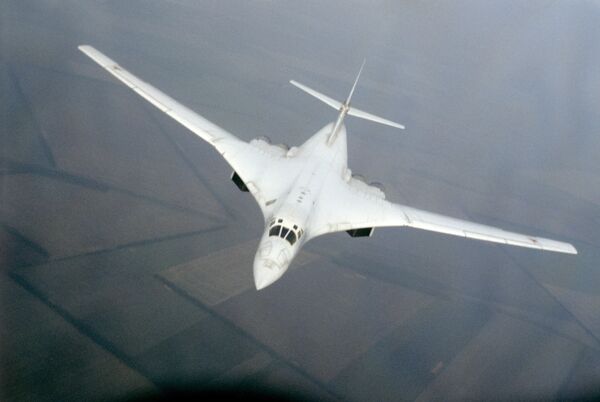Russia's Deputy Prime Minister Dmitry Rogozin said on Tuesday he was in favor of development of the PAK DA long-range bomber for the country's air force, just hours after saying the project was unnecessary, in apparent contravention of President Putin's call last week for domestic aerospace industry to develop just such an aircraft.
“I am for PAK DA but it should not be a copy of the B-2. We need to look at the horizon and develop hypersonic long-range aviation, civil and military,” Rogozin said on his Twitter blog on Tuesday afternoon. The B-2 is an American long-range stealth bomber developed by Northrop, which became the most expensive aircraft ever built and is in service with the U.S. Air Force in very small numbers.
Earlier on Tuesday, Rogozin, who has special responsibility for the military-industrial complex, insisted Russia has no need to develop a new long-range bomber to replace its existing fleet.
Rogozin was repeating a statement he made to Russian media reports earlier this month. He said then that he saw no need for PAK DA, an acronym for future long-range aircraft in Russian, to replace the air force's ageing Tu-95MS cruise-missile carriers and Tu-160 supersonic bombers.
“These aircraft will not get anywhere. Not ours, not theirs,” Rogozin said in an interview with Izvestia in June.
"I'm ready to insist on my point of view," Rogozin said on Tuesday on his Twitter blog. "With modern air defense systems, these targets will be destroyed on the way," he said.
In May, Rogozin called on Russia's defense industry to develop hypersonic air-breathing weapons as a future strike system. He picked out American development work in the X-51, Falcon, HiFire and HyFly programs as examples of what he described as the perspective threat posed by U.S. hypersonic development work.
"The undertaking of this work allows us to lay the basis for creation of a national competitor in hypersonic weapons," he said.
Development of such a weapon should be discussed at the highest levels of state, he said.
Last Thursday, President Vladimir Putin ordered initial development of the new long-range bomber for strategic aviation. Speaking during a conference on defense orders, Putin said: "We have to develop work on the new PAK DA long-range bomber aircraft for Long-Range Aviation. I know how expensive and complex this is. The task is not easy from a scientific-technical standpoint, but we need to start work," Putin said.
If Russia did not start work soon on the project, it could miss the boat, Putin said.
Defense Minister Anatoly Serdyukov said previously that a new aircraft assembly line in Russia's Kazan plant (KAPO) would build PAK-DA and the new Antonov An-70 propfan transport aircraft. The same plant previously built the Tu-95MS and Tu-160.
The Defense Ministry is due to hold a meeting to discuss development of the new bomber later in June.
“The comments from Putin and Rogozin appear to reflect sharply differing opinions – unusually being aired in public - as to the desirability of pursuing a bomber replacement for the Tu-160 and Tu-95 in the strategic strike role," said Douglas Barrie, air warfare analyst for the London-based International Institute for Strategic Studies.
"In the long term the Russian Air Force’s role in the nuclear triad – beyond the Tu-160 and the Tu-95 – would seem to rest on the acquisition of the PAK DA, though the aircraft would also have utility in the tactical environment. A programme such as PAK DA would be expensive, and whether this could be accommodated within available likely funding also remains in question,” he added.
Currently, only Russia and the United States operate intercontinental range bomber aircraft. Most other nuclear-capable nations rely solely on intercontinental ballistic missiles, based on submarines or in land-based silos, or cruise missiles. The United States has expressed an interest in successor systems to its B-1, B-2 and B-52H long-range bombers.



